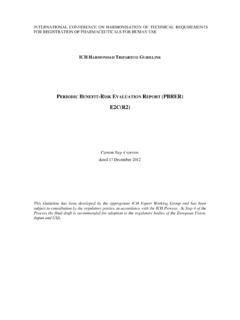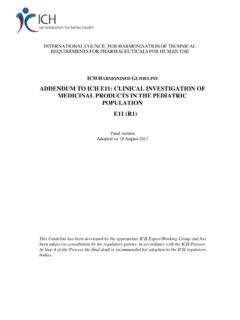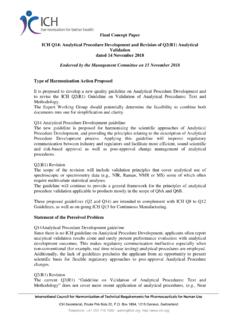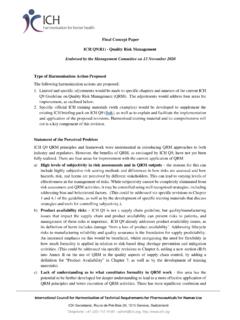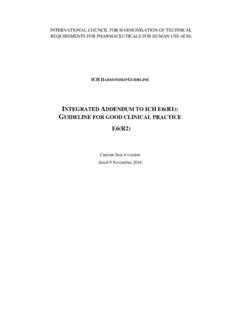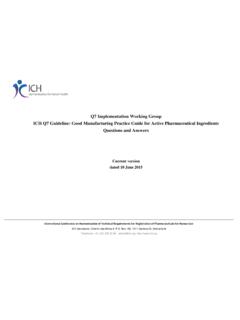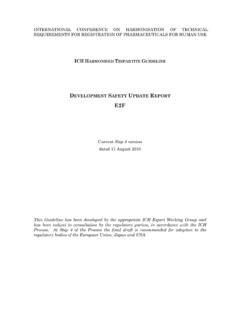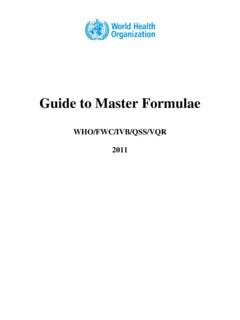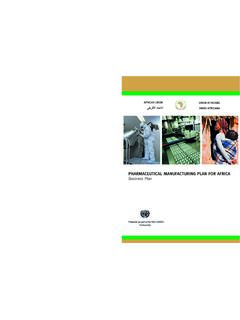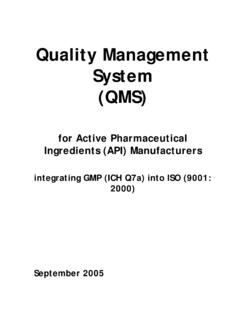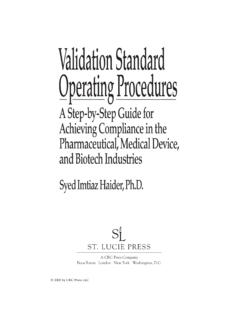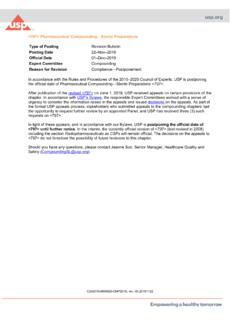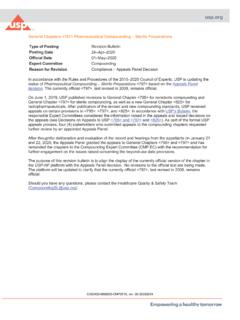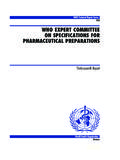Transcription of INTERNATIONAL CONFERENCE ON HARMONISATION OF …
1 INTERNATIONAL CONFERENCE ON HARMONISATION OF TECHNICAL REQUIREMENTS FOR REGISTRATION OF PHARMACEUTICALS FOR HUMAN USE - 1 - Concept paper Q7: Good Manufacturing Practices for pharmaceutical Ingredients Dated and endorsed by the Steering Committee on 5 February 1998 Introduction Problem statement: Starting materials are all the constituents of a medicinal product, the active pharmaceutical ingredients and the excipients. For biological medicinal products, (such as vaccines, serums, toxins, allergen products and medicinal products derived from blood or plasma), starting materials mean all of the constituents as well as source materials such as micro-organisms, tissues of either plant or animal origin, cells or fluids (including blood) of human or animal origin and biotechnological constructs.
2 Supervising medicinal products relies on two main aspects: quality of design and quality of conformity. Quality of design is assessed by the competent authorities through the application dossier for a marketing authorization. In addition to efficacy and safety, pharmaceutical quality aspects are considered (including manufacturing method, testing, etc.). Quality of conformity relies mainly on the quality of manufacture, which should be in accordance with the marketing authorization, to ensure consistency of production and operate a satisfactory quality assurance system.
3 Manufacturers observe a quality assurance (QA) system including Good Manufacturing Practice. Competent Authorities carry out an inspection before the manufacturing authorization is granted and thereafter rely on repeated inspections to monitor compliance with GMP and the relevant legislation. This framework does not always apply to the manufacture of starting materials. In many countries there is no compulsory inspection scheme nor even the possibility to establish GMP certificates for starting materials.
4 This guideline could be developed in a number of phases. The first phase would be confined to active pharmaceutical ingredients. Following the acceptance of a step 2 harmonised guideline for active pharmaceutical ingredients, the WEG could make a proposal to the Steering Committee concerning the development of separate guidelines covering excipients, source materials for biologicals and target materials for radiopharmeceuticals. Background/Status quo: There are several different GMP guidelines for starting materials.
5 There is the 1987 PIC ( pharmaceutical inspection convention ) guideline on GMP for active ingredients. However, this text is very schematic and applies only to active ingredients. PhRMA has also adopted a FINAL Q7 Concept Paper February 1998 - 2 - guideline which covers active ingredients, intermediates and excipients. In 1987 the FDA issued an inspection guideline for bulk actives. In 1996, two European industrial organizations, EFPIA and CEFIC jointly produced a guideline on GMP for active ingredients.
6 In addition, in 1995 the IPEC (which covers Europe, the US and Japan) produced a GMP for excipients. These guidelines have been very well received by the authorities and could be used as a basis for drafting an INTERNATIONAL guide to GMP. Furthermore, WHO have published 2 separate guidelines, one for active ingredients (in 1992) and one for excipients in 1997. The FDA is currently (since 1994) developing a guideline on GMP for active pharmaceutical ingredients. More recently, there has been an INTERNATIONAL initiative, organized by PICS ( pharmaceutical inspection Co-operation Scheme) which includes 12 EU Member States, the Czech Republic, Hungary, Iceland, Liechtenstein, Norway, Romania, Slovak Republic, Switzerland, Canada, China and the US, with the European Commission and WHO as observers.
7 This is the most recent INTERNATIONAL initiative and it has built on the FDA, CEFIC and PhRMA guides, however, it does not include Japan and the EU are present only as observers, for the moment. The mandate to implement a guideline arising from this PICS initiative is not as clear it would be for an ICH guideline. Nevertheless the scientific consensus and expert resource which has recently been developed in the PICS group, together with the other guidelines developed by other authorities and industry, could be built on to develop, in a single ICH documents, a GMP guide for starting materials which could be implemented in a consistent way by regulatory authorities in all of the participating regions.
8 Furthermore, ICH could provide for co-ordination of any updates. Impact: HARMONISATION of a single set of INTERNATIONAL standards for the manufacture of starting materials, which would be beneficial both for the protection of public health and INTERNATIONAL trade. Timeframe: March 1997 Draft concept paper circulated July 1997 Updated concept paper circulated September 1997 PICS draft released for comments by December 1997 MHW & JPMA indicated readiness to consider this as a topic.
9 February 1998 The ICH Steering Committee decided to take up this topic and to invite additional experts, both regulators from non-ICH countries and industry representatives of active ingredient manufacturers. Mid 1998 First EWG meeting September 1998 Second EWG meeting End 1998 Step 2 draft likely, for active pharmaceutical ingredients FINAL Q7 Concept Paper February 1998 - 3 - Expert group: A working group of up to twenty experts to be convened, consisting of: two experts from the six sponsors (12); one from each of the ICH observers: Canada, EFTA and WHO (3); one from IGPA (1); one from WSMI (1).
10 Three regulators from Australia, China and India, PICS to be asked to nominate theses (3).
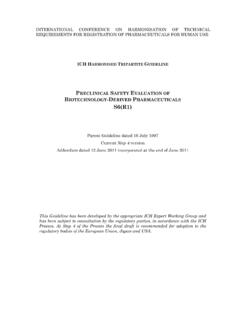
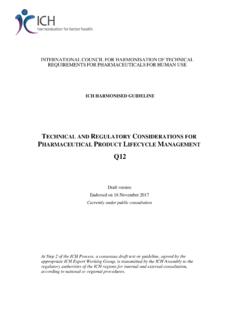
![[ICH E2F] [EXAMPLE DSUR – PHASE III INVESTIGATIONAL …](/cache/preview/e/7/a/2/e/6/3/0/thumb-e7a2e63043c4463724e748eb98faa3a7.jpg)
